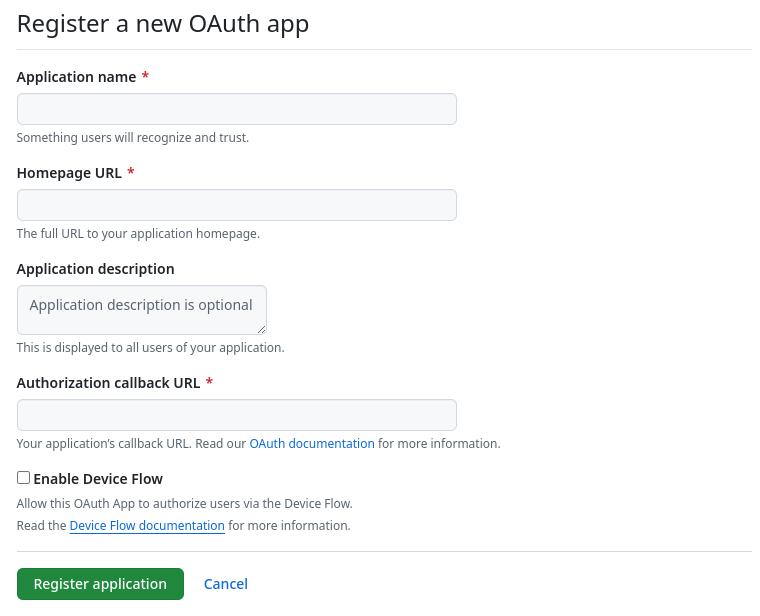Chapter 7. Creating an OAuth application in GitHub
The following sections describe how to authorize Red Hat Quay to integrate with GitHub by creating an OAuth application. This allows Red Hat Quay to access GitHub repositories on behalf of a user.
OAuth integration with GitHub is primarily used to allow features like automated builds, where Red Hat Quay can be enabled to monitor specific GitHub repositories for changes like commits or pull requests, and trigger contain image builds when those changes are made.
7.1. Create new GitHub application
Use the following procedure to create an OAuth application in Github.
Procedure
- Log into GitHub Enterprise.
-
In the navigation pane, select your username
Your organizations. -
In the navigation pane, select Applications
Developer Settings. In the navigation pane, click OAuth Apps
New OAuth App. You are navigated to the following page: 
- Enter a name for the application in the Application name textbox.
In the Homepage URL textbox, enter your Red Hat Quay URL.
NoteIf you are using public GitHub, the Homepage URL entered must be accessible by your users. It can still be an internal URL.
- In the Authorization callback URL, enter https://<RED_HAT_QUAY_URL>/oauth2/github/callback.
- Click Register application to save your settings.
- When the new application’s summary is shown, record the Client ID and the Client Secret shown for the new application.